By Lou Miano
This is the first in an ongoing series based on the Emmy-Award winning NET-TV’s City of Churches series that profiles houses of worship in the diocese. The program takes an in-depth look at the art and architecture of churches, highlighting the unique history that connects different generations and cultures.
St. Sebastian’s church, located at 58-02 Roosevelt Ave. in Woodside, has a very interesting story.
The neighborhood dates back to the 1860s when it was known as the “Village of Woodside.” Its first Catholic parish, St. Sebastian’s, was established in a meeting room at the village firehouse in May of 1894.
Thirty-five-year-old Father Edward W. Gannon was appointed the first pastor and a parishioner presented him with a beautiful gold-plated, silver chalice. Engraved on the base: “Mrs. Thomas J. Ryan – to Rev. E.M. Gannon November 12, 1894.”
There were 350 Catholics in the parish, and Masses were held in various meeting halls and homes while funds were being raised by Father Gannon to build a church.
By 1896, a small wooden church had been constructed. A large population and construction boom occurred once the Queensboro Bridge was complete in 1909 linking the borough of Manhattan with Queens. A brick building that served as both a new St. Sebastian Church and the parish school was constructed in 1926 and served the community for many years.
In those days, movies were the most popular form of entertainment. The 2,000 seat Loew’s Woodside Theater also opened in 1926 and the first film screened there was “Battling Buster,” featuring one of the most popular silent movie comedians, Buster Keaton.
As the neighborhood continued to grow during the next 25 years, many more Irish immigrants arrived in Woodside, and the parish was once again in need of a bigger church. In the 1950s, RKO was forced by a Supreme Court decision to sell off some movie theaters. The Loew’s Woodside Theater was purchased by the pastor, Father Edward A. Moran. The entrance lobby was replaced by a Romanesque bell tower. The rest of the theater auditorium was left intact, which is why this is one of only a very few churches without any stained-glass windows.
The conversion of this building into a church retained many features of the theater: a long sloping floor, 112 feet in length, provides an unobstructed view of the altar. A section of the wall in the old projection booth was removed so that the space could serve as the choir loft. The large chandelier in the center of the ceiling medallion can still be lowered to change the lightbulbs.
The baldacchino above the altar is the only place inside the church that features an image of St. Sebastian, the Roman martyr.
St. Sebastian’s also has a small side chapel adjacent to the main building that does contain some stained-glass windows. The artist was Joep Nicolas, a fourth-generation glassmaker known as the “father of modern stained glass.” (His daughter, Sylvia created windows for St. Thomas More Church which opened in 2004 on the Queens campus of St. John’s University.)
Nicolas’ style featured vibrant colors and contrasting images. One particular window has an upper panel depicting the Nativity scene with Baby Jesus cradled in the arms of His mother, while beneath it is the image of Jesus after His crucifixion, once again cradled in the arms of His mother.
The church was renovated in the 1990s and an artist named Felix Chavez created the murals behind the altar. The color scheme of the original side columns was repainted in a faux marble design.
Reflecting the changing face of the parish are statues popular with the newer generations of immigrants who worship here: the Sacred Heart of Jesus, and Divino Niño – the Child Jesus.
The bell outside the rectory entrance, 39-63 57th St., has an unusual history. Originally a steamship bell salvaged from a sunken wreck in the 1800s, it was then placed in the tower of the local Woodside firehouse. When the first St. Sebastian church was built in the 1890s, it was moved to the steeple. When that church was eventually demolished, the bell was installed in the rectory garden.
Earlier, we referenced the chalice given to the first pastor, Father Edward W. Gannon. He died in 1911 and that chalice was apparently given to his relatives as a keepsake.
In 2010, a church in Vancouver, Canada, contacted the then-pastor of St. Sebastian’s, Msgr. Michael J. Hardiman, because a chalice with the church name engraved on it had recently been donated to a local thrift shop up there. It turned out to be Father Gannon’s chalice from 1894. How it ended up in a Canadian thrift shop is anybody’s guess, but it was returned to the Woodside parish where it was refurbished and used during Easter services in 2010 and special parish events.

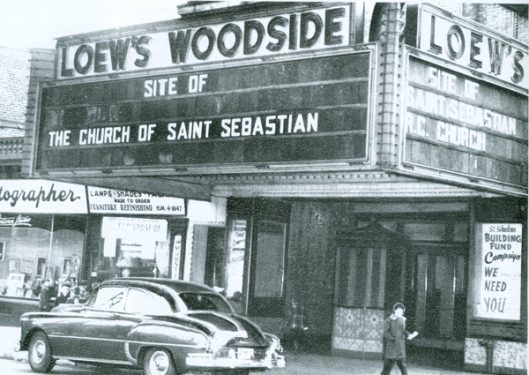
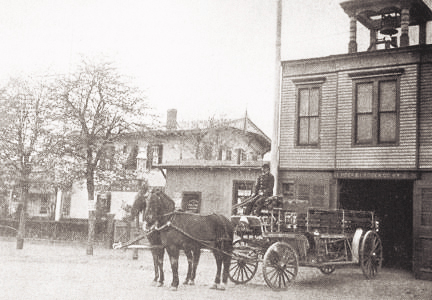
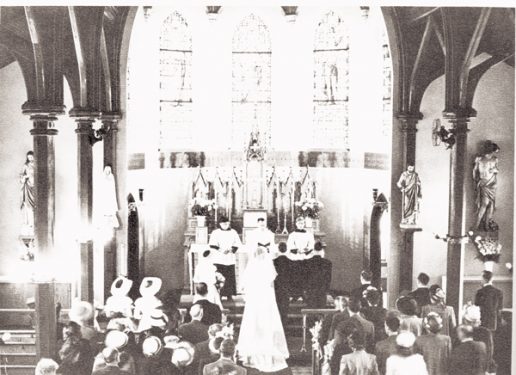
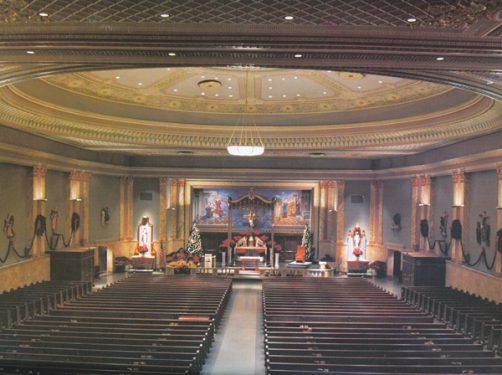
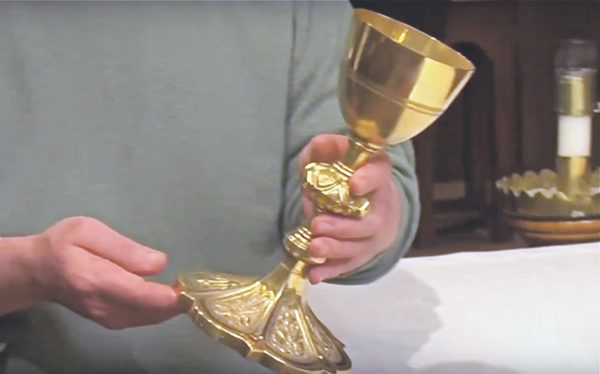
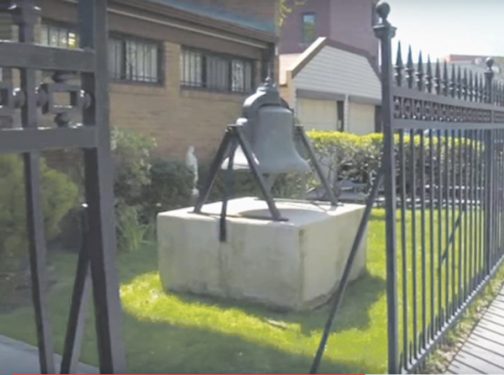
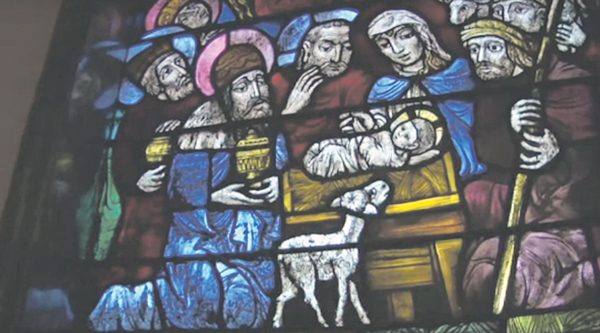
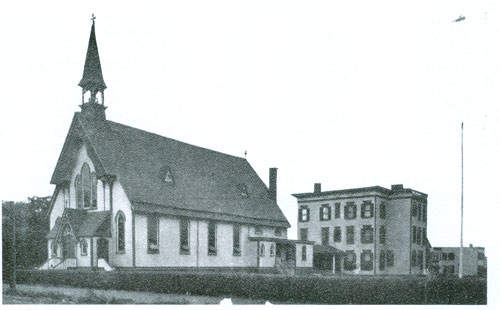
I was the best man at my brother Charlie’s a proud Viet Nam veteran in the late 60th he and his wife Breeg are still growing strong great memories
I was an alter boy in the 1950’s at St Sebastian’s
Church and well remember the ‘old movie theater’
design of the church, having lead Christmas
processions up the center aisle and back down
the side aisle. The canopy over the alter, held up
by gold posts, was another unique feature. Many
fond memories from those days!
I was also an altar boy at St. Sebastian’s from 1962 to 1965. I remember those processions very well. I also made my First Holy Communion and Confirmation in that church. My parents were married in the old wooden St. Sebastian’s Church on Woodside Avenue before it was torn down to add an extension onto the elementary school.
I was baptized on May 1,1955 in the church preceding the current church. Does anyone know the location of the preceding church?